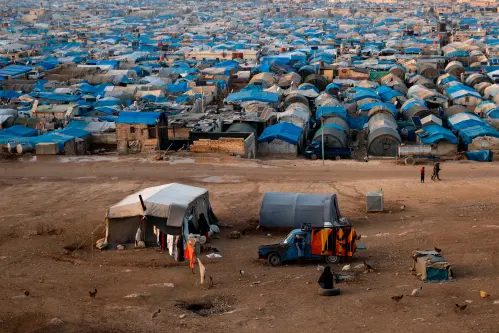The floods of August 2022 could not have come at a worse time for Pakistan caught up in deep macroeconomic and political turmoil. A ballooning trade deficit, impending debt service obligations, and fast-depleting reserves had put a lot of pressure on the exchange rate, which had depreciated 24 percent in 21-22. Inflation was at an all-time high (27 percent year on year). Already in an IMF program (the fifth since 2000) with stringent fiscal targets, there was little room to fund large unanticipated expenditure. Nearly $31 billion concessionary capital, which would help create the fiscal space needed to respond to any exogenous shock, was tied up with the continuation of the IMF program. To make things worse, the coalition government that had ousted the previous government in a vote of confidence resisted tough conditionality and the program was on hold. A general election was around the corner and removing the monstrous energy subsidy carried a huge political cost.
The deluge
Pakistan receives 70 percent of its rain in the monsoon months of July and August. Low pressure over the Tibetan plateau attracts water-laden winds from the Arabian sea and the Bay of Bengal. The winds travel westward along the Himalayas and shed water mainly in Pakistan’s upper Punjab. The water flows back to the Arabian sea via storm drains and the Indus River system. A good proportion of this water is diverted to the world’s most extensive canal irrigation system, and some of the world’s largest hydroelectric power plants, vital for farming, drinking, and energy needs of the country. Pakistan’s stellar reduction in poverty, now in the single digits, is largely due to the harnessing of this hydraulic system.
In the summer of 2022, as U.N. Secretary-General António Guterres put it, “the monsoon was on steroids”: Pakistan received 190 percent of its normal rainfall in July and August. Importantly, Baluchistan in the western part of the country, normally unaffected by the summer monsoon, and Sindh in the south, received 450 percent more rain than normal. With flood basins saturated with water, the natural drainage system was overwhelmed and a vast area of rich farmland and human settlements was flooded.
The consequences were disastrous. The floods submerged one-third of the country in water, 15,000 people were dead or injured and 8 million were displaced. Over 2 million homes, 13,000 kilometers of highways, 439 bridges, and more than 4 million acres of agricultural land were destroyed or damaged. An estimated 9 million more people could be forced into poverty as a direct consequence of these floods. The losses amount to 2.2 percent of GDP; the agriculture sector accounts for the largest decline at 0.9 percent. The recovery and reconstruction needs are projected at 1.6 times the budgeted national development expenditure for the financial year 2023.
Response
The immediate response was to provide relief to the suffering. $245 million, raised from the government’s own resources and contributions by private citizens and international donors, was provided in cash support to 2.2 million households and hundreds of thousands of tents, food, water, and medicines were distributed to the displaced. The fund for emergency relief was revised up to $816 million after additional international commitments.
The key, of course, was the massive post-floods reconstruction to avoid longer-term adverse impacts on economic growth and on the livelihood of low-income households. Working with the United Nations system, the World Bank Group, the Asian Development Bank, and the European Union, a Post-Disaster Needs Assessment (PDNA) was prepared, which estimates flood damages to exceed $14.9 billion, economic losses over $15.2 billion and reconstruction needs over $16.3 billion. The core priorities of this Resilient Recovery, Rehabilitation, and Reconstruction Framework (4RF) are the revival of livelihoods and agriculture, the rebuilding of private housing, and the reconstruction of public infrastructure, including roads, bridges, schools, and hospitals.
Metrologists contend that Pakistan’s floods were caused by climate change-induced increase in temperatures for which the rich countries bore responsibility. COP27 discussions at Sharm al-sheik in November 2022, influenced by Pakistan floods, helped towards the consensus that rich countries must compensate the vulnerable poor countries for the suffering from climate change disasters. This resulted in setting up the “loss and damage” fund.
The urgency to respond to Pakistan’s needs, without waiting for the laborious “transition committee” to operationalize the damage and loss fund, led to the International Conference on Climate Resistant Pakistan hosted by the U.N. in Geneva in January. It resulted in a pledge of $10.57 billion by multilateral and bilateral creditors for reconstruction—more than the $8.15 billion Pakistan was expecting. The PDNA target was $16.3 billion, 50 percent from own resources. The breakdown of the pledge is: Islamic Development Bank Group $4.2 billion, World Bank $2 billion (revised up to $2.7 billion), Asian Development Bank $1.5 billion, Asian Infrastructure Investment Bank $1 billion, Saudi Arabia $1 billion, France $345 million, China $100 million, US $100 million, EU $93 million, Germany $88 million, and Japan $77 million.
Accessing the funds
Accessing concessionary climate funds, before the floods, had been a sobering experience. Accounting for just 0.6 percent of global CO2 emissions in 2018, an important greenhouse gas (GHG), Pakistan ranked 27th among the world’s top CO2 emitters (largely because of polluting technology and large population size). Without new initiatives annual greenhouse gas (GHG) emissions are projected to more than triple by 2030. In the government’s view, any 50 percent reduction below baseline projected emissions should be financed 15 percent from domestic and 35 percent from international sources. However, the volume of global concessionary finance is modest. Of the total CF of $632 billion following the Paris Agreement in 2019-20, $65 billion was concessionary finance by multinationals to East Asian economies and only $20 billion was grants to the poorest countries. Pakistan found concessionary finance criteria to be exceptionally stringent despite several debt swap opportunities (switching to clean energy, massive reforestation program, upgrading harvesting technology to reduce crop residue burning). Ukraine war further clouded prospects for securing such funds.
Accessing funds following the Geneva pledge in response to the floods will have its own challenges. Pakistan’s finance minister revealed that almost 90 percent of pledges made by the international community at the donors’ conference in Geneva for flood-hit Pakistan were project loans that will be rolled out over the next three years. How soon Pakistan gets the money will depend on how quickly mutually agreed projects can be designed and counterpart funds made available.
A preliminary analysis of the World Bank pledge shows that $650 million is re-purposed from previous commitments, $1.3 billion from the overall IDA commitment (part of $3.9 billion, 7 percent of total IDA Performance Based Allocation to Pakistan), and $700 million is additional money from the crisis response window. Similarly, Islamic Development Bank’s $4.2 billion is largely ($3.6 billion) normal trade finance. ADB financing structure is a similar mix of re-purposing and upfronting previously committed allocation and some fresh money.
Pakistan’s complex macroeconomic situation will pose tough challenges for rolling out the Geneva pledge. Central to the ongoing IMF program is a tight fiscal stance requiring the removal of unfunded and poorly targeted subsidies. Reconstruction will need additional fiscal space. To remain consistent with program design, the reconstruction expenditure has to be monitored closely to make sure that the fiscal space is not misappropriated. Recently approved World Bank IDA credits to respond to the floods in Sind and Baluchistan (part of the Bank’s Geneva pledge) is an opportunity to include expenditure tracking instruments to ensure that subsidy reform supported by the IMF program continues even as the government responds to the disastrous impact of the floods on low-income rural households.
Six months after the deluge, an estimated 4.5 million people remain exposed to or living close to flooded areas; about 2.5 million people do not have access to potable water; an estimated 1.1 million people are at risk of sliding from acute food and livelihood crisis (IPC3) situations to humanitarian emergency (IPC4) food security situations due to insufficient support; Malaria outbreaks have been reported in at least 12 districts of Sindh and Balochistan; over 7 million children and women need immediate access to nutrition services; an estimated 3.5 million children, especially girls, are at high risk of permanent school dropout; the Pakistan Floods Response Plan is only 36 percent funded more than halfway through its 9-month duration; much of the infrastructure destroyed by the floods remains to be re-built.





Commentary
Responding to Pakistan floods
February 10, 2023